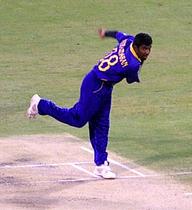This article relies largely or entirely on a single source .(January 2012) |
This is a list of Indians in Sri Lanka . The list includes notable people from multiple different ethnicities, as well as people native to India who are living in or notable in Sri Lanka.
Contents
- Politicians
- Artists
- Sports
- Businesspeople
- Authors
- Lawyers
- Others
- Karava, Demalagattara and Kshatriya Solar Dynasty
- See also
- References
There is also large number of Sinhalese identifying Sri Lankans of Indian descent, such as the Karava, Durava, Salagama castes and Demalagattara [1]
